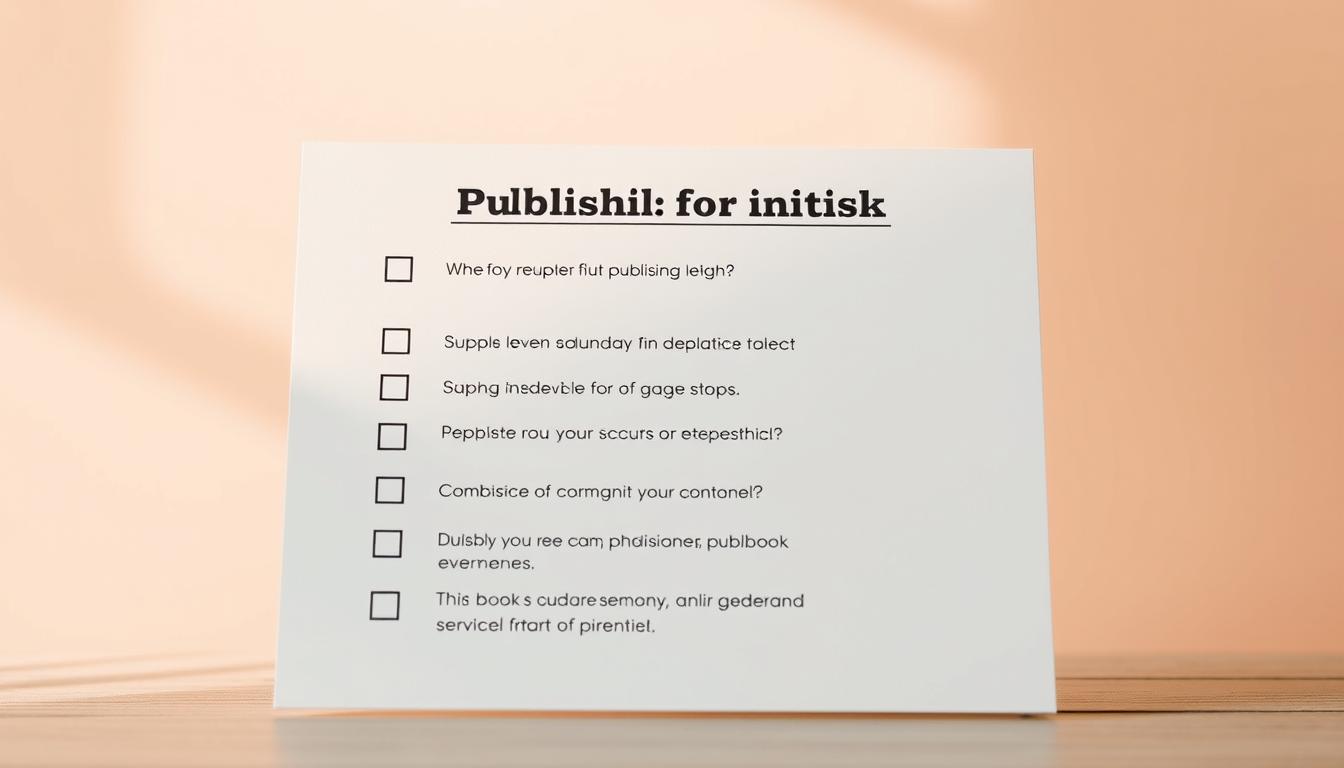Physical Address
304 North Cardinal St.
Dorchester Center, MA 02124
Physical Address
304 North Cardinal St.
Dorchester Center, MA 02124

Navigating the journey from raw manuscript to finished product can feel overwhelming. This guide simplifies every phase, helping creators transform their work into professional-quality literature ready for readers. You’ll find clear actionable steps tailored for both new and seasoned writers.
Many aspiring authors stumble through trial and error, wasting time and resources. Our systematic approach eliminates guesswork, offering a proven path to avoid common mistakes. Learn how to prepare your work for editors, design eye-catching covers, and choose distribution channels strategically.
Timing matters in this competitive industry. We break down realistic deadlines for each phase, from revisions to marketing plans. Discover cost-effective strategies that protect your budget while maximizing visibility.
This resource empowers you to make informed decisions at every crossroad. Whether pursuing traditional routes or self-publishing, you’ll gain tools to stand out in crowded markets. Let’s turn your literary vision into reality.
Choosing how to share your story with readers shapes every decision you’ll make. Two primary paths exist: managing the process independently or partnering with established industry experts. Each route offers unique benefits that align with different creative and financial priorities.
Independent creators retain full ownership of their work’s vision. You decide the release date, cover art, and promotional strategy. This approach typically costs $2,800-$5,300 upfront but delivers 60-70% royalties per sale.
| Aspect | Independent Path | Partnered Path |
|---|---|---|
| Creative Control | Full ownership | Shared decisions |
| Time to Market | 3-6 months | 12-24 months |
| Upfront Costs | $2,800-$5,300 | Publisher-funded |
| Royalty Rates | 60-70% | 10-15% |
Established partnerships provide editorial and marketing support but require patience. Securing a contract often involves multiple submissions over several years. Royalty percentages shrink, but advance payments offset initial efforts.
Consider your timeline and career aspirations carefully. Immediate publication works well for topical content, while traditional routes suit writers building long-term industry relationships. Both methods can successfully connect stories with eager audiences when executed strategically.
Crafting a standout manuscript requires more than good writing – it needs strategic alignment with reader expectations. Start by analyzing top-performing titles in your genre on Amazon. Notice recurring themes, character archetypes, and narrative structures that resonate with your target audience.
Balance originality with familiar elements that satisfy genre fans. Mystery lovers expect puzzles with satisfying resolutions, while romance readers crave emotional payoffs. Inject your unique voice into these frameworks to create something fresh yet commercially viable.
| Focus Area | Research Tactics | Execution Tips |
|---|---|---|
| Character Development | Study reader reviews of bestsellers | Create flawed protagonists with clear motivations |
| Story Structure | Chart plot points in top 20 genre titles | Use three-act structure with timed reveals |
| Market Gaps | Compare subtitle trends on Amazon | Address underserved topics or perspectives |
Nonfiction authors should identify pressing questions in their field through forum discussions and social media groups. Structure chapters to solve specific problems, using clear headers and actionable advice.
Refine your draft using this 3-phase manuscript revision checklist before professional editing. Ensure consistent pacing by varying chapter lengths and ending sections with compelling hooks.
Formatting matters as much as content. Use standard fonts like Times New Roman (12pt) and proper paragraph spacing. These details signal professionalism to agents and editors, increasing your work’s market potential.
Breaking down the production timeline prevents costly mistakes. Every successful title moves through three core phases: refining content, crafting visuals, and perfecting details. These stages ensure your work meets industry standards while maintaining your creative vision.
| Stage | Typical Duration | Key Actions |
|---|---|---|
| Content Refinement | 2-4 weeks | Developmental edits, line edits, beta reader feedback |
| Visual Design | 1-3 weeks | Cover creation, interior layout, typography selection |
| Final Review | 1 week | Format checks, proofreading, quality assurance |
Smart planning accounts for unexpected delays. Build buffer days between phases – editors might need extra time for complex revisions. Rushing through design could lead to alignment issues in ebook formats.
Distribution preparation starts during final reviews. Create compelling metadata like category selections and author bios. Platform uploads require specific file types, so verify requirements early.
Regular communication keeps collaborators aligned. Share updated timelines with designers and proofreaders weekly. This proactive approach maintains momentum while preserving quality.
Creating a foolproof action plan ensures smooth progress from draft to final product. A well-structured roadmap keeps you organized while meeting industry standards. Let’s explore critical components every creator needs to track.
Begin with verifying your manuscript’s readiness. Finalize all chapters before moving to editing stages. This prevents wasted efforts on design elements that might change with content revisions.
| Checklist Component | Purpose | Action Steps |
|---|---|---|
| Content Validation | Ensure story consistency | Beta reader feedback, plot hole checks |
| Professional Editing | Enhance readability | Hire copyeditor, schedule developmental review |
| Visual Branding | Boost market appeal | Research genre-specific cover trends |
| Formatting Prep | Meet platform specs | Create print/digital layout templates |
Design elements require special attention. Your cover must grab attention in thumbnail size while conveying genre. Interior layouts need proper margins and font choices for comfortable reading.
“A strategic checklist transforms overwhelming tasks into manageable wins,” notes bestselling author Jamie Carter. This approach helps creators maintain momentum during complex processes.
Final steps involve metadata optimization:
Research distribution platforms early. Understand each retailer’s file requirements and royalty structures. This knowledge helps avoid last-minute formatting scrambles before launch dates.
Why do polished books stand out? They undergo rigorous refinement through multiple editing stages. Start with self-editing to fix plot holes and grammar errors. This groundwork saves money and time before involving professionals.
Developmental editors tackle big-picture elements. For fiction, they analyze character arcs and pacing. Nonfiction experts check content flow and clarity. A 60,000-word project typically costs $1,000-$2,000 for this service.
| Stage | Focus | Timeline |
|---|---|---|
| Copy Editing | Grammar & consistency | 2 weeks (80k words) |
| Proofreading | Final typos | 3-5 days |
Schedule editors early – top professionals book 4+ weeks in advance. Use tools like this ultimate editing checklist during revisions. Allow 1-2 weeks to review suggested changes before approval.
Proofreaders provide last-line defense against errors. They spot formatting glitches and misplaced commas that others miss. Budget for this final quality check – it’s cheaper than post-launch corrections.
Remember: Great editing transforms rough drafts into reader-ready works. Each stage builds confidence in your manuscript’s professionalism. Plan timelines backward from your release date to avoid rushed jobs.
Your book’s visual identity acts as its silent salesperson. Research shows 70% of readers decide to explore titles based solely on cover design. This critical element combines art and psychology to communicate your story’s essence before page one.

Investing $500-$800 in professional design often yields strong returns. Genre-specific conventions matter most – romance novels use soft gradients, while thrillers favor bold contrasts. Study top sellers in your category to identify effective patterns.
| Design Element | Focus Area | Key Considerations |
|---|---|---|
| Front Cover | Immediate impact | Title legibility at thumbnail size |
| Spine | Shelve presence | Text alignment for visibility |
| Back Cover | Conversion driver | Compelling synopsis + author bio |
Begin front layout work during copyediting phases. Finalize your title and trim size first. For print versions, wait until confirming page count before designing spines – paper type affects width calculations.
Interior formatting demands vary:
Test digital versions across devices. Ensure graphics render properly and text remains readable on small screens. Remember: Great design enhances both discovery and reading experience.
Your book’s online visibility begins with smart metadata choices. These hidden details determine how retailers and readers find your work. Think of them as digital fingerprints that guide your target audience to your title.
Craft titles that spark curiosity while staying true to your story. For thrillers, short punchy names work best. Romance novels often use emotional phrases like “Second Chance Hearts.” Test options with beta readers to gauge reactions.
| Component | Fiction Focus | Nonfiction Focus |
|---|---|---|
| Subtitle | Highlights tropes (e.g., “A Gothic Mystery”) | States specific benefits (e.g., “7-Step Productivity System”) |
| Description | Teases conflict without spoilers | Lists practical outcomes |
| Keywords | Genre-specific terms (“cozy mystery”) | Solution-oriented phrases (“time management”) |
Select BISAC codes carefully. Pair broad categories like FIC027020 (Romance/Historical) with niche codes. This dual approach helps retailers suggest your work to the right readers.
Use keyword tools like Publisher Rocket to find popular search terms. For a baking cookbook, target phrases like “gluten-free desserts” instead of generic “recipe book.” Update metadata quarterly based on sales trends.
Platforms handle details differently. Amazon prioritizes keywords in descriptions, while Barnes & Noble emphasizes category placement. Create platform-specific versions while keeping core messaging consistent.
Selecting the right distribution channels determines how readers discover your work. Direct uploads to retailers like Amazon let you keep full profits, while aggregators spread your title across multiple stores for fees. Print-on-demand services eliminate inventory risks, making them ideal for new creators.

Amazon KDP shines for speed and simplicity. Ebooks go live in under 24 hours, with print versions ready in 3-5 days. No setup fees make it budget-friendly. IngramSpark offers wider bookstore access but charges $49 upfront plus $25 per revision. Their processing often takes weeks, delaying your release.
| Feature | Amazon KDP | IngramSpark |
|---|---|---|
| Cost | Free | $49 setup |
| Ebook Speed | <24 hours | Days |
| Print Proofs | 3-day delivery | 7+ days |
Prepare files meticulously. Print interiors need PDFs with proper margins, while digital versions require EPUB formatting. “Test files on multiple devices,” advises indie author Lisa Monroe. “A misplaced page break can ruin reader experiences.”
Consider your goals. Immediate sales favor Amazon’s reach, while library placements benefit from Ingram’s distribution. Budget time for proof approvals – rushed launches often lead to costly reprints.
Building lasting connections with readers transforms casual buyers into loyal fans. Start by crafting an author platform that reflects your unique voice. Social media engagement and email lists become powerful tools for nurturing relationships beyond the initial sale.
Launch week momentum drives long-term success. Schedule teaser posts 6 weeks pre-release, mixing visuals with story snippets. Partner with influencers in your genre – their authentic reviews often convert better than ads.
Pre-orders matter more than many realize. Retailers prioritize titles with strong early traction. Offer exclusive content like bonus chapters to incentivize early commitments. Track results weekly using free analytics tools.
Smart creators blend evergreen tactics with trend-responsive moves. Update blog posts with fresh insights, share reader testimonials, and experiment with short video formats. These efforts keep your work visible long after launch day.
Remember: Every interaction shapes your literary legacy. Consistent, genuine outreach builds communities that support your current project – and every future endeavor.